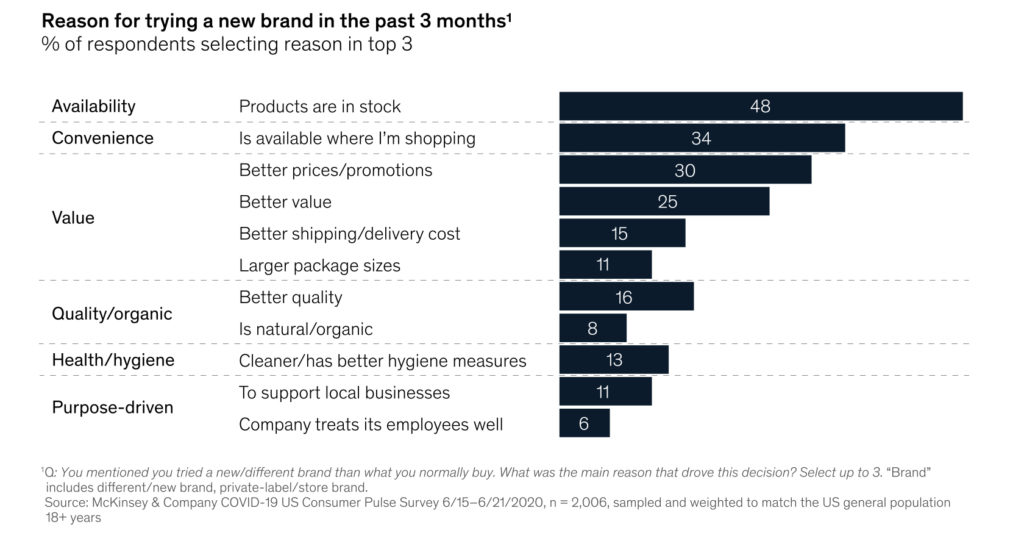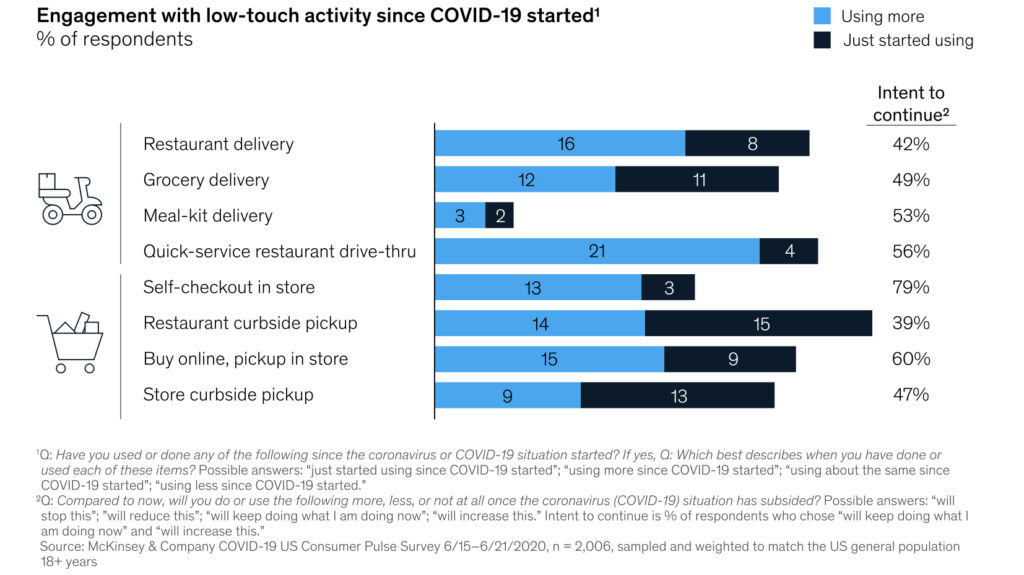American’s shopping behavior has changed drastically over the past couple of decades but most notably in the past couple of years. Many people are placing convenience higher on the list of priorities in their lives than ever before. Practices like digital shopping for everyday necessities like groceries and household items have taken over and businesses must adapt to this change in consumer behavior.
How Can Companies Make the Shift to Convenience?
Need to Ensure Availability
Currently there are issues with product availability in stores due to labor shortages, supply chain and shipping issues. Consumers are becoming more willing to try out new brands and services. With consumer flexibility brands must be ready to accommodate an influx of new customers and demands. According to a study by Mckinsey & Company, “Availability, convenience and value are the strongest drivers of new brand purchases.” [1]
Need for Hygiene Transparency
Amidst the COVID-19 pandemic shoppers must now be cognizant of exposing themselves and their family to a novel disease. This shift has led shoppers to consider the cleanliness and health cautions that a business implements as a factor of patronizing an establishment.
Making your health practices easily visible and understood upfront will lead consumers to feel safer and more willing to do business with you. Technologies that enhance hygiene, particularly contactless activities such as food and grocery delivery and curbside pickup, are taking off. “There is strong intent to continue contactless activities across the United States. As an example, 79 percent of consumers intend to continue or increase their usage of self-checkout in retail after COVID-19. Millennials and Gen Z are the widest adopters of contactless activities.” [1]
Consider, health establishments such as clinics, pharmacies and hospitals which have really had to implement new technologies for this new paradigm of caution.
Consumers Focusing on Just the Essentials
Regardless of their income, many consumers have scaled back their spending habits since the onset of the pandemic. “Around 40 percent of US consumers have reduced spending in general, and they expect to continue to cut back on nonessentials specifically.”
Retailers and brands must utilize advanced analytics to anticipate changes in consumer trends over the coming months to prepare their offerings to meet the needs of the consumer.
Consumers Want more Value for their Money
Based on concern for the uncertain economy, consumers are focused more on value – especially for essential goods. Researchers have found that consumers aren’t buying as many luxury essential products like shampoo and other household items. Retailers should consider that more people are opting for bargain brand products over more premium ones and generic medication vs. name brand options when determining their inventory.
Shift to the Homebody Lifestyle
It should come as no surprise that more Americans are spending a record amount of time at home. Even as restrictions from COVID-19 are beginning to relax, people are maintaining some of their quarantine habits like eating from home and ordering food. “Investment in at-home fitness through equipment purchases and online activity is growing. Consumers still expect to spend more time on at-home activities, even in less-restricted regions.”
“Consumers want products that help them stay comfortable at home” and also products that make them comfortable when they must venture outside. [2] The more businesses can cater to this newfound way of life the more successful they will become.
Invest in Convenience
The pandemic economy may be waning but some of its effects will be lasting. Society has developed behaviors that we will hold on to for the foreseeable future like spending more time at home, valuing money, hygiene and accessibility. Businesses must make sure they are able to keep up with the needs of the consumer by investing in technology and resources that will keep them competitive.
Resources:


